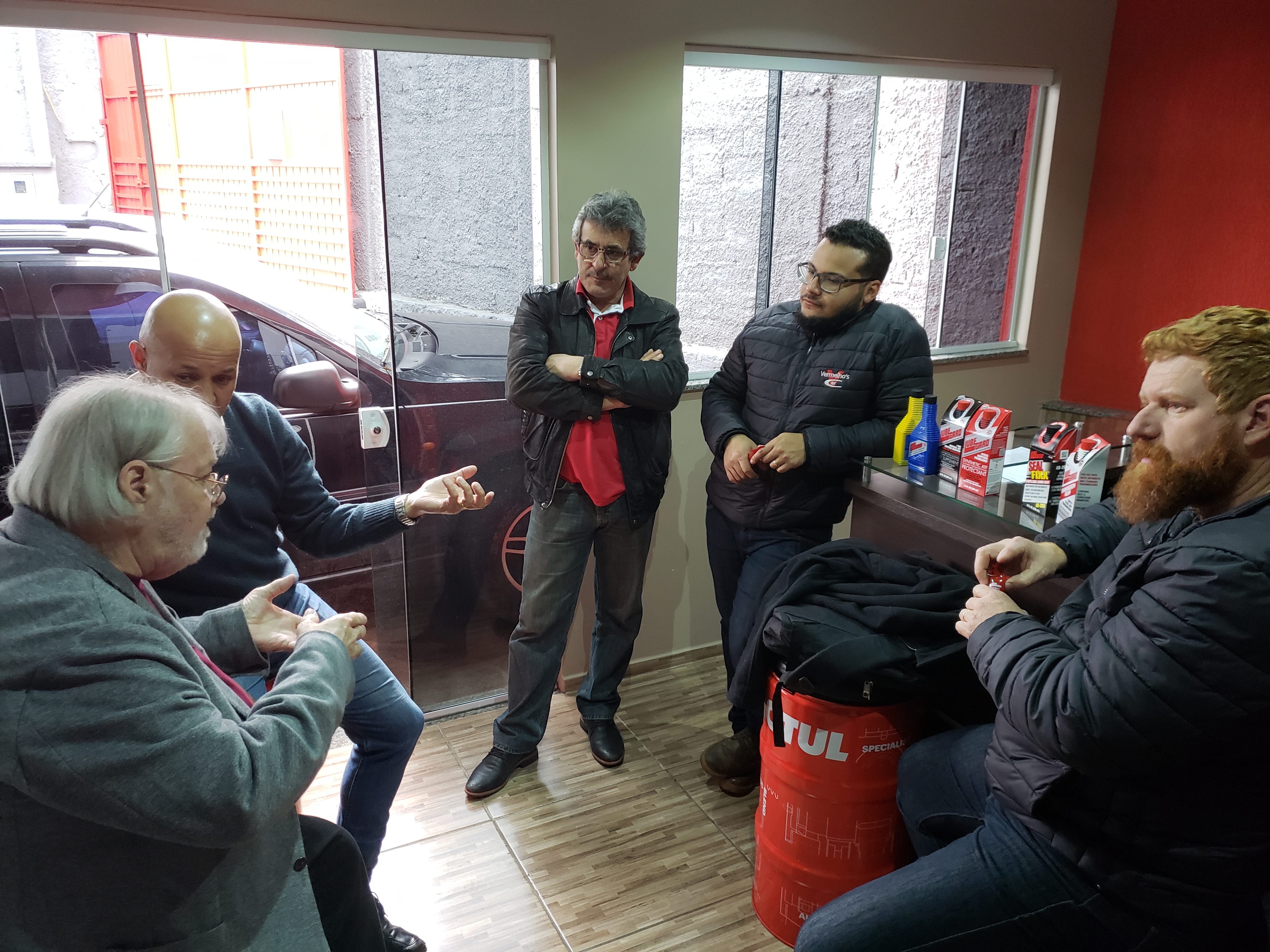Keepin’ It Rio
Participating in the automotive aftermarket has become a unique opportunity for me to travel and engage in the automotive aftermarket of other regions of the world. Recently, I was fortunate enough to be invited to Brazil  to introduce technicians and mechanics to service technology and products widely available to the US automotive service aftermarket. Not knowing the technical background of the technicians and sales people I would be speaking to, I made it a point to put together several technical presentations on the methods & products currently used in North America by the lubricant service industry. The array of products was not so different, but the perceptions and general knowledge of the service industry were based on a system that was changing rapidly as their automotive customers’ needs were evolving at a rate we would find daunting. Many of the challenges they face are common to anyone in the business, zoning regulations (certain types of business get restricted to certain areas, often not convenient for neighborhoods) tax regulations from different Federal, state and local jurisdictions. Stringent and enforced policies on used oil and other byproducts of the service business. The list goes on and on and is familiar to most business owners in the automotive service business no matter where you are as we have the same things to contend with. The biggest difference I observed was the lack of a fluid change service industry in general. Most work was handled by dealerships (with appointments necessary days in advance) or by general service shops that ranged from spectacular (appointment needed) to small one-man operations with no lift or group affiliations, just simple oil changes with whatever oil they carried (scary at best).
to introduce technicians and mechanics to service technology and products widely available to the US automotive service aftermarket. Not knowing the technical background of the technicians and sales people I would be speaking to, I made it a point to put together several technical presentations on the methods & products currently used in North America by the lubricant service industry. The array of products was not so different, but the perceptions and general knowledge of the service industry were based on a system that was changing rapidly as their automotive customers’ needs were evolving at a rate we would find daunting. Many of the challenges they face are common to anyone in the business, zoning regulations (certain types of business get restricted to certain areas, often not convenient for neighborhoods) tax regulations from different Federal, state and local jurisdictions. Stringent and enforced policies on used oil and other byproducts of the service business. The list goes on and on and is familiar to most business owners in the automotive service business no matter where you are as we have the same things to contend with. The biggest difference I observed was the lack of a fluid change service industry in general. Most work was handled by dealerships (with appointments necessary days in advance) or by general service shops that ranged from spectacular (appointment needed) to small one-man operations with no lift or group affiliations, just simple oil changes with whatever oil they carried (scary at best).
The companies I visited have taken it upon themselves to help educate and operate with the latest technologies, lubricants and machines to establish the concept of quality automotive service at any level they can establish a foothold. We visited incredible shops full of high-end cars, and small but efficient shops with as many customers as they can handle because they have the right combinations of talent, technology and price. The problem is there are not many of them, and most vehicles need some type of service performed and can’t get it done.  The ultimate outcome of this failure-to-service is the vehicles do not last as expected. Most people I spoke with have little faith in the longevity of their vehicle and this was one of the most discussed topics while I was down there. I think the strongest lesson I left behind was the “secret” to keeping cars and trucks running for long periods of time is routine maintenance with good lubricants being performed by a shop or technician you trust. This sounds incredibly simplistic to believers like me and the rest of the US automotive service industry, but it was food for thought for them. This was also the strongest point of pride I took home with me.
The ultimate outcome of this failure-to-service is the vehicles do not last as expected. Most people I spoke with have little faith in the longevity of their vehicle and this was one of the most discussed topics while I was down there. I think the strongest lesson I left behind was the “secret” to keeping cars and trucks running for long periods of time is routine maintenance with good lubricants being performed by a shop or technician you trust. This sounds incredibly simplistic to believers like me and the rest of the US automotive service industry, but it was food for thought for them. This was also the strongest point of pride I took home with me.
A reliable vehicle is the result of quality parts, fluids, maintenance, and technicians; we figured this out a long time ago in this country. The success we enjoy today is the outcome of many years of trying to get it right and finally finding our rhythm to became part of the American automotive stream of consciousness that flows through our culture. I wished the guys in Brazil the best of luck, but more importantly, I tried to show them how to go out and grow into the local market. By making themselves a part of the local automotive scene using current technical knowledge, cutting edge service practices, and superior products, they provide automobile owners with the quality service they need to get the most out of their vehicle. This is what we did in this country until we became an integral part of the community and service provider networks. We are part of American automotive culture because we self-evolved it and as long as we focus on that, the future looks bright enough that we may need sunglasses.

